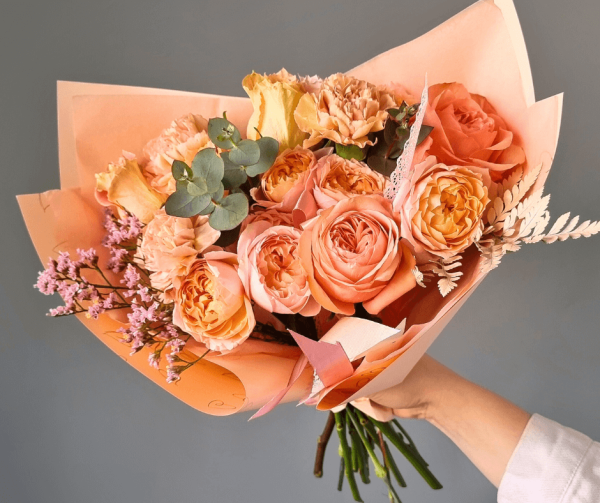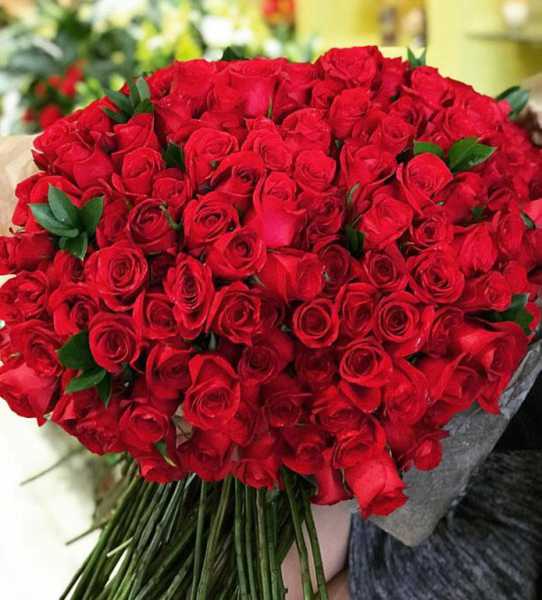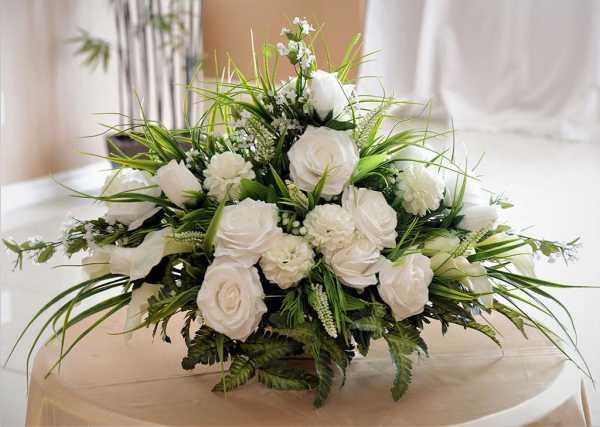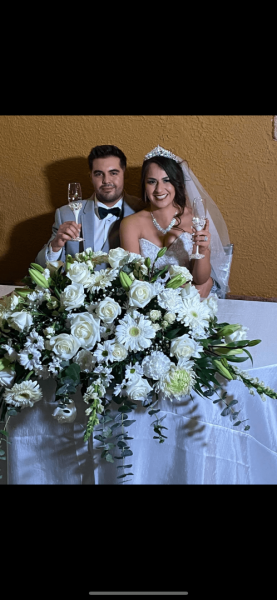x
E
L
E
G
A
N
T
P
E
N
G
U
I
N
Florists
Florists
Whatever the occasion may be, we have you covered on where to get great flower arrangements to make the statement you need to make. Tell them the Bridal Quince and the Family Guide sent you!
Tips on picking flowers for your wedding or quince:
- Understand that there are no right or wrong choices when selecting flowers for your wedding or quince. It is your own personal choice, as your own preferences are the most important part, as well as having a basic understanding of what works well for the theme you've chosen and your budget. You can also expect a good florist to provide you with helpful advice, so be prepared to ask plenty of questions and to run ideas past your florist once you reach that stage. Some basics to grasp before getting into the details include:
- Remember that less is more. Flowers are the splash of color, the ornamentation on top of many other already beautiful parts of a wedding or quince.
- Good positioning and use of inexpensive foliage can create the sense that you have more floral arrangements than you actually do.
- Your florist must share your vision, or it's time to find one who does.
- Start by looking through bridal and quince magazines, books, and even gardening books that focus on flowers. If you don't already have an idea of the types of flowers you'd like to have, simply looking at beautifully photographed flowers can be a lovely way to start getting an idea of what you like. Even consider taking a tour of a local Botanical Garden or a greenhouse where flowers are on display, to get a real feel for how the flowers appear.
- Learn the different meanings of the flowers so that this can play a part in your decision; you might want to express certain sentiments through the "language of flowers".
- There are some classic wedding flowers with which you can't go wrong. They are: roses, peony, lily of the valley, hydrangea, orchid, and calla lily. This doesn't mean you must have any of these flowers but it can help you when deciding to know that these classics are sound choices.
- Determine your budget. Before you get too excited, do the sums. Some floral arrangements might not be realistic once you have budgeted for everything else, so it's a good idea to know how much you have to spend on flowers before getting your hopes up. When you visit the florist, you can discuss the extent of your budget and work from there. It's a good idea to keep some flowers on your "must-have" list and some on your "wish-list", so that if you do have to pare down, the wish-list flowers can go first without depleting the flowers that you must have.
- Be prepared to be more creative if you're on a budget.
- Don't hedge around the cost with your florist. Be honest if you can't afford much; it'll help your florist look for cheaper but just as lovely alternatives early on.
- Use expensive flowers sparingly, such as for the bridal or quince bouquet only.
- Centerpieces soon add up. Consider finding less elaborate centerpieces to reduce the costs if your budget is tight.
- Feel free to mix and match flower types and to raid the garden as well. All flowers are beautiful, whether they're cheap or expensive; the important thing is freshness and a price you can afford.
- Use fragrant flowers to give the impression that there are more flowers; stronger smelling flowers will perfume a room with ease (for example, frangipani, lilies, hyacinths, jasmine, and sweet peas).
- Consider the color of the flowers. Color is an important part of your decision about which flowers to have. The colors chosen should complement the bridal or quince gown, the wedding or quince theme, and the clothing of the rest of the bridal or quince party. Colors chosen according to the seasonal availability will allow you the greatest impact for the smaller price, as seasonal flowers will always cost less. When thinking about color, consider what the flowers have to contend with in the room, marquee, or outdoor area where they're located and be sure to choose colors that will stand out. Some of the more popular flowers by color choice include:
- White: rose, sweet pea, camellia, stephanotis, narcissus, gardenia, orchid, lily of the valley, jasmine, and snowdrop.
- Pink: rose, ranunculus, peony, sweet pea, carnation, tulip, protea, boronia, and lily.
- Lavender: lavender, lilac, anemone, statice, iris, delphinium, and hydrangea.
- Yellow: daffodil, sunflower, tulip, gerbera, lily, and freesia.
- Red: gerbera, rose, dahlia, poinsettia, and amaryllis.
- Consider the season. The season plays an important role in your choice, especially if you're budget-conscious. While non-seasonal flowers can be flown in, this increases the cost and complexity considerably. And if you're into locally grown produce, it's hardly appropriate to have flowers flown in! Some of the more well-known, popular flowers are indicated alongside their season here (noting that there may be regional and climate variances depending on where you live in the world):
- Spring flowers: amaryllis, anemone, daffodil, freesia, gerbera, lily of the valley, orchid, ranunculus, stephanotis, and sweet pea.
- Summer flowers: anthurium, carnation, chrysanthemum, gypsophila, lily, magnolia, peony, rose, and sunflower.
- Autumn/fall flowers: agapanthus, aster, clematis, daisy, hosta, hydrangea, passion flower, and pinks.
- Winter flowers: camellia, euphorbia, iris, nerine, pansy, poinsettia, snowdrop, tulip.
- All year round flowers: calla lily, carnation, gypsophila, orchid, protea, rose, and tulip (although this list may vary by region).
- Think about where you want flowers to play a role in your wedding or quince.Wedding or quince flowers can be simple or elaborate depending on the type of wedding or quince that is being planned. Either way, they should have a look of individuality and look as if they have all been specially created for the bride or quince. Flowers are suitable for the following places and arrangements:
- The bridal or quince bouquet, and bouquets for the wedding or quince party members.
- Flowers can be placed at the end of pews, on the altar, chancel steps, windowsills, around candelabra etc. Floral displays in most churches need to be large to be effective in the huge space of the church.
- A register or registry office building or town hall may be less willing to have your own flowers but it's worth asking if you can bring in one special arrangement of your own.
- A decorated bridal or quince arch or arbor.
- A carpet of fresh petals for an outside wedding or quince.
- Tables at a sit-down dinner.
- Flowers around a hall, marquee, dance area for the reception.
- Start with the bridal or quince bouquet. This is the most intimate floral arrangement for the wedding and if you can't afford many flowers, at least don't skimp on the bouquet! The bride's or quince's bouquet should be the largest and most spectacular bouquet in the wedding or quince party. White is still traditionally the most popular color for the bride's or quince's bouquet, but many different colors are used in weddings and quinces today from soft pastels such as pale pink through to rich, vibrant colors such as hot pink, burgundy and violets. Ultimately, the choice of flowers for the bouquet depend on what you want, the style of your dress, your height and your wedding theme. It is recommended that you don't finalize the bouquet until you have chosen your dress, because the two must match perfectly, and usually the larger the dress, the larger the bouquet.
- There are various styles of bouquets. These include round, trailer, sheaf, crescent, line, and cascade bouquets:
- Round bouquets are a popular choice for many brides. This style is usually used for large flowers such as roses or peonies, loosely arranged with foliage and tied with a ribbon.
- Large trailing bouquets (a cascade) are particularly suited to romantic style wedding gowns. They will only work well with larger dresses though; they overpower anything slinky or close-fitting. These usually consist of flowers wired to a handle; it is both the most traditional and most formal form of bouquet shapes.
- Tied bouquets are hand tied casually or wound together with wire. This style goes best with a modern, simple dress at a contemporary wedding.
- A posy is a minimalist approach that is very small and usually hand-tied with ribbon; lily of the valley is an ideal flower for this type of bouquet.
- A pomander bouquet is usually made without the addition of foliage and it can be suspended on a ribbon for the bride to wear on her wrist.
- An elegant line bouquet of lilies is a good choice for a slim-fitting gown.
- A modern style bouquet made of exotic flowers and tropical foliage will suit the contemporary bride or quince.
- Consider additional embellishments to a bouquet:
- Pearls and crystals can be incorporated into bouquets for a touch of added glamour.
- For a delicate touch sheer organza ribbon can be used to create ribbon bows and long streamers.
- Wide satin ribbon will give a rich, luxurious look.
- There are various styles of bouquets. These include round, trailer, sheaf, crescent, line, and cascade bouquets:
- Decide upon the bouquets for your court. The flowers can be a smaller version of the brides or quinces flowers or a different shape but still maintaining the color theme. If the bride or quince is carrying a trailing bouquet the court could carry round bouquets. Each of the bouquets can be the same color as the brides or quinces bouquet. If you do select a different color, ensure that it blends well with the bridal or quince bouquet and the overall wedding color theme. Ultimately, aim for good coordination.
- To give a different look, the court could carry elegant evening bags filled with flowers. The bag would need to be lined with a piece of plastic to prevent staining the inside of the bag. A piece of soaked florist foam can be placed in the bag and the flowers and foliage arranged in the foam to extend gracefully from the top of the bag.











